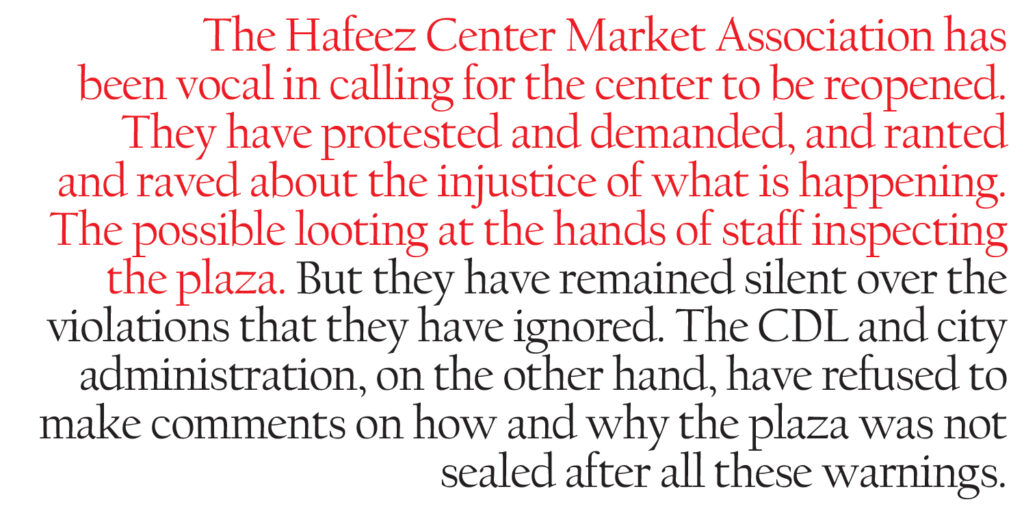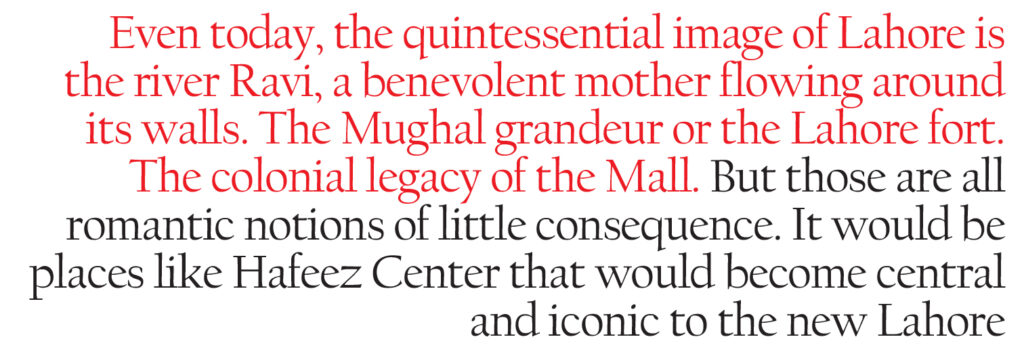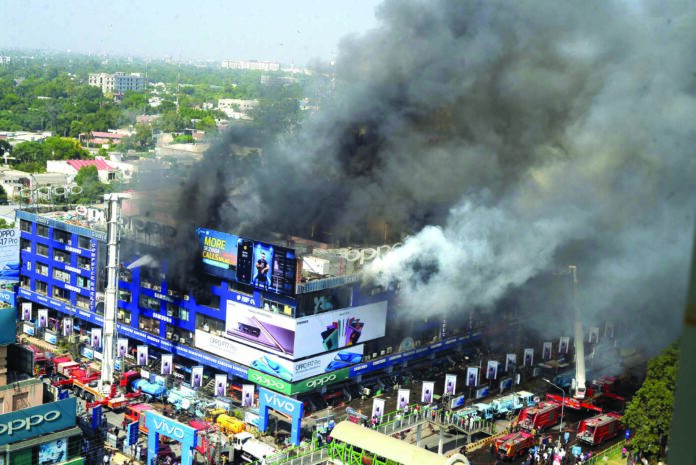On Sundays, shopkeepers sleep in. All week in bazaars, plazas, malls, and hovels over the country, they open their shops in the morning, they haggle all day and all night, arrange supply, and make bargains. They eat at their shops, some of the ‘chotas’ at these shops in the bigger cities, often hailing from remote parts of the country, sleep inside the shops.
The shop, as a unit, is vastly underappreciated by the customer. But for the occupants of the shop, these small scale traders and salesmen that make up so much of the soul of the market, it is often a second home. The people manning them spend most of their time there. They are rarely owned by them, but a lot of them are held in perpetuity, and passed along from father to son.
Which is why after spending a majority of their waking hours in their shops, on Sunday, the shopkeepers rest. They wake up late in their homes, spend a day of leisure with their families or however they please. Sundays are their reward. Sundays are sacred.
On the Sunday before last, October 18th, the shopkeepers of Lahore’s iconic Hafeez Center did not get to sleep in. They trailed in with unwashed faces and frazzled hair. A slowly but surely growing crowd of men in t-shirts over shalwars and all manners of night dresses watched on in horror as at least three floors of the center bellowed with flame and smoke.
In front of their very eyes, years of earnings and losses in the millions of rupees were going up in flames. But for all the lost sleep, terror, and tragedy early on that Sunday morning, some part of those shopkeepers must have been grateful. Grateful that the fire had broken on a Sunday, and all they had lost was their sleep and livelihoods, when they very well could have lost their lives if the fire had waited but a day.
Hafeez Center, that lofty hunk of ugliness that has become a vital part of Lahore, has been a disaster waiting to happen for years. It is a lesson in the chaotically mismanaged and unregulated urban planning that Pakistan’s major cities have been a victim of. Who is to blame for the fire is an important question, and one we will address. But there are larger lessons to be drawn from Hafeez Center.
Its present, as a blackened almost-national-catastrophe, serves as a warning against being apathetic to issues such as safety regulations. But its past, as an up and coming plaza in an ancient city rapidly adapting to the modern age, tells us the story of business acumen, foresight, and wily decision making. And it’s future is for all of us to witness. This is the story of Hafeez Center.
Past
In 1992, two brothers dreamed of, invested in, and built the Hafeez Center on Main Boulevard Gulberg. The details about who they were, what family they belonged to, and why they chose to name the plaza ‘Hafeez Center’ are hazy. Very early on, the brothers began to sell the shops off, and the plaza was like any other.
At this point in time, Lahore’s hot shopping district was the Liberty Market. Even today, Liberty continues to house one of the largest retail markets in the entire city. But Main Boulevard, which is perhaps the most expensive real estate in the city today, was still a developing area. Places like Auriga and Hafeez Center were just popping up.

It is hard to imagine now, but this is all before former Punjab Chief Minister Shehbaz Sharif’s signal free corridors. In fact, it would not be until 1997 that Shehbaz Sharif would come into office for the second time and set in motion his road expansion programmes. Not even the infamous ‘Honey Bridge’ from Main Boulevard to Cavalry, rumoured to have been constructed so the younger Sharif could avoid traffic on his way to his second wife’s residence, had not been built yet. This was a very different Lahore from the one we are accustomed to in this day and age.
And in it were surging these plazas. Large, solid, and an aesthetic eyesore, buildings of the kind were constructed with the express purpose of being shopping centers in a city that was still decades away from its ‘mall’ revolution. It would not be until the mid 2000s that Pace would declare itself next to Hafeez Center and on Model Town Link Road, and it would not be until 2016-17 when mega malls like Packages and Emporium would add themselves to Lahore’s cityscape.
For its first four years in operation, Hafeez Center was like any other shopping plaza in the area. Because these plazas were the closest thing to malls that the city had, they had reputations. This meant you did not go to Auriga or Hafeez Center for a particular shop, but you went to one of these plazas to look for a shop that you could then begin frequenting. Because of the stiff competition from neighbouring plazas, shopkeepers in each plaza were quick to form unions and associations to try and plan ways to attract more customers.
Hafeez Center was no different. Shops here also sold clothes, shoes, toys, and other retail goods. What did happen, however, was that a number of computer shops began opening up in the center. In the early 1990s, Intel’s Pentium processors and Microsoft Windows had only just been released in the rest of the world, and Pakistan was far behind, with 486s and MS-DOS. But archaic as the computers may have been, people wanted them, and soon enough, more computer shops began to open in a cluster in the center.
It was very early on that the center gained a reputation for these products. Again, what they were selling was not necessarily different from the products computer shops in other parts of the city were selling, it was just that Hafeez Center became the go to place for computers and computer products. So in 1996, the traders association at the center made a drastic decision: the plaza would only rent out to businesses involved in the computer or computer accessories business. Not even other electrical products like fridges, lights, or motors would make the cut. This would be a software center as much as a shopping center.
The declaration had been made, a flag planted, and an identity fully and happily adopted. This was the new Lahore. It was a small step in an ancient city moving one step forward. Even today, the quintessential image of Lahore is the river Ravi, a benevolent mother flowing around its walls. The Mughal grandeur of the Lahore fort. The colonial legacy of the Mall. But those are all romantic notions of little consequence. It would be places like Hafeez Center that would become central and iconic to the new Lahore.
As the years went by, the plaza expanded both physically and in terms of stature. The first Nokia phones that started streaming into Pakistan could be found in Hafeez Center, as well as the sleeker Motorola phones that shopkeepers somehow had ways of producing even though there were no dealerships for them in the country.

By the late 2000s and early 2010s, Hafeez Center was full. Shops on the ground or mezzanine floors could fetch rents up to Rs100,000 and if one was vacated, new customers would be waiting in line months before the current occupant left. In fact, on their own and against Lahore Development Authority (LDA) bylaws, shops began to sublet and divide themselves with the approval of the Hafeez Center traders association as early as 2003-04.
Kiosks selling mobile phone accessories popped up and even within the center, floors began to specialise. The ground floor was the hub for phones, laptops, and accessories. The basement for equipment like cameras, tripods, lighting equipment, as well as rarer things like gaming cables, converter USBs, and other hard to find products. The upper floors would specialise in building desktop computers, printers, repair shops, and other hardware accessories – low footfall shops but with products and services that have a higher margin.
The fire
At least 500 shops were gutted on that Sunday morning, with millions of rupees worth of equipment going up in flames. The fire was caused by a short circuit, and its rapid spread attributed to the flammability of the products on display.
While no loss of life occurred, 25 people did have to be rescued from the center; all of them junior shop workers that sleep inside their shops at night. With more than 1,000 shops in the center, the second and third floors burnt down completely. The cream of the plaza is the ground floor and basement, but the overall damage to the building was estimated around 40%.
As the reality of what had just happened sunk in, shopkeepers began to mobilise. Many whose shops were safe were hoping for a quick return, but police and district administration sealed the plaza, declaring its building ‘dangerous’ for business or other use the very next day.
A 14-member committee formed by the Punjab government to conduct a preliminary investigation into the horrific fire revealed that the Civil Defense Lahore’s (CDL) district office had reported 9 violations to the Hafeez Center Market Association (HCMA) on August 18 whereas the plaza’s association had also ignored warnings regarding inactivity of fire extinguishers.
A prime example of no one holding up their end of the bargain, the HCMA has been vocal in calling for the center to be reopened. They have protested and demanded, and ranted and raved about the injustice of what is happening. The possible looting at the hands of staff inspecting the plaza. But they have remained silent over the violations that they have ignored. The CDL and city administration, on the other hand, have refused to make comments on how and why the plaza was not sealed after all these warnings.
According to one source, most of the center was operating illegally. Originally, the plaza had been divided into shops of 1-2 marlas each. But as the center continued to thrive, shop renters began sub-letting their shops, and where there was space for one shop, three to four were operating.
Not only does this raise the electricity load, as well as flaunting LDA bylaws, the presence of hazardous materials including paint used for refurbishing laptops and the rising congestion due to increased thoroughfare was bound to end in disaster at some point or the other.
Once again, it was also incredibly lucky that the fire occurred on a Sunday, because if it was packed with people as it normally is, there are very few fire exits. In fact, they are so inadequate that at least 25 people still had to be rescued from the roof because they could not find a fire escape. Part of the reason for this is that another plaza has been constructed adjacent to Hafeez Center, where a parking lot used to be.
With exposed wires everywhere, it is a miracle that the fire was contained as much as it was. Recent renovations funded by phone company, Oppo, had centrally air conditioned the plaza to increase clout. But all the wiring for this had been exposed and a hazard.
The congestion is perhaps an even greater threat. Other than dividing shops illegally, there is also the issue of kiosks that the HCMA has allowed. These kiosks and stalls take up walking and breathing space, meaning if there is even the threat of a fire or an earthquake or something minor, the threat of a stampede is very high, particularly at rush hour.
Present
Hafeez Center is a lesson in good business thinking, the importance of specialised clusters, as well as being in the right place at the right time. After this fire, it is also a lesson in why urban planning needs to be given more thought and attention. And now, after the fire, it is a lesson in scrambling.
As soon as the plaza was shut and it became apparent things would not be normal for at least a few months, (we hope longer since that is what it will take to not just get Hafeez Center up and running again, but up to the standard it should be), the first thing that happened was the plazas around Hafeez Center trying to cash in.
Pace, the shopping mall right next to Hafeez Center that has seen better days, has emptied and offered their entire fourth floor to shopkeepers looking for space after the destruction of their shops in Hafeez Center. According to Shehreyar Taseer, around 100 shops of the center have been accommodated at market rate.
But Pace is decrepit and dingy in its own right. Not hazardous like Hafeez Center, but also old, musty, and generally unappealing. That is where Jeff Heights comes in. This is the center to Hafeez Center’s right. Newer, shinier, and emptier, according to shopkeepers in Hafeez Center, they immediately reacted by not only increasing their rents, but also revising their standard rent agreement to require at least 6-months advance rent and an equal amount as a security deposit.
It has long just been a matter of legacy and inertia that Hafeez Center has continued to be the juggernaut it is. The plazas next to it, like Jeff Heights, or adjacent to it like Latif Center are newer and prettier. They have also specialised in computers, but Hafeez Center was still the dream. Going from Latif Center to Hafeez Center was still considered a graduation since that is where all the customers were going. And because it was such a force to be dealt with in terms of foot traffic, the center could offer the best prices as well. The question on everyone’s mind now, is whether it will go back to being the same Hafeez Center whenever it is operational again, or if it will be a more level playing field for the other plazas in the vicinity.
“This Gulberg downtown is the Silicon of Punjab, if not Pakistan,” says Asim Husain. Only a little while ago, the computer engineer had been looking for a shop in Hafeez Center, where he wanted to shift from Latif. The comparison is a stretch and a half, since this is not a software development area at all. But he is right about one thing: it is the tech hub market at the very least in Lahore, and Hafeez Center has been its lynchpin.
The future
At the moment everyone is clueless about the total loss due to the fire. Hafeez Centre union leader, Malik Kaleem, says the losses are in the billions if every individual’s loss is to be viewed. Lahore Deputy Commissioner, Mudassar Riaz, also told Profit that they had submitted a report to the chief minister. “The report has indicated that of the 904 shops that the plaza is home to in its six floors, only 687 of them are intact completely. At least 204 shops have been partially damaged.”
Malik Kaleem, without mentioning why repeated warnings had been warned by the association, demanded that the structural examination of the building can be completed at the earliest so they can get to the renovations and start their businesses again. “The building has been sealed, the officials were reluctant to allow the shopkeepers of intact floors to take out their items. They had to fill in a form and it was a very slow process.”
Clearly the shopkeepers of Hafeez Center are already worried about the possibility of losing their competitive advantage, particularly the ones that have not lost their shops in the fire. Usually, in such situations, the demand is for compensation. In this case, they just want the plaza to open again – which could potentially be disastrous again.





































The fire on Sunday is common. Al Fatah got burned on a Sunday. So Sunday is either mandated or very civil.
Most of the shops were insured, some got outright damaged and destroyed. But majority of the shops were Tax evasive. No fire-security and damage-mitigative preparations were in place – the void was just too big to be not noticed.
Hafeez Center was a dormant accident & calamity waiting for years. Why it took so long could either be miraculous or a sinister act just came in at the opportune time.
Either way, it was a national disaster, which was not responded as it deserved. All it did was, it just pushed up the prices of adjacent business centers higher than expected. IT Tower, Hali Road, just got the maximum occupancy maybe full in under 8-10 years it was made.
Jeff Tower gets a lease of life – rumors are perpetrators wanted Jeff Heights to get the attention. Blackened Hafeez Center will now not allow the evil eye be casted on Jeff Heights.
Clear winners, Jeff Heights, IT Towers, Pace but not Al-Hafeez Heights, across the road. Winners or …… perpetrators..?